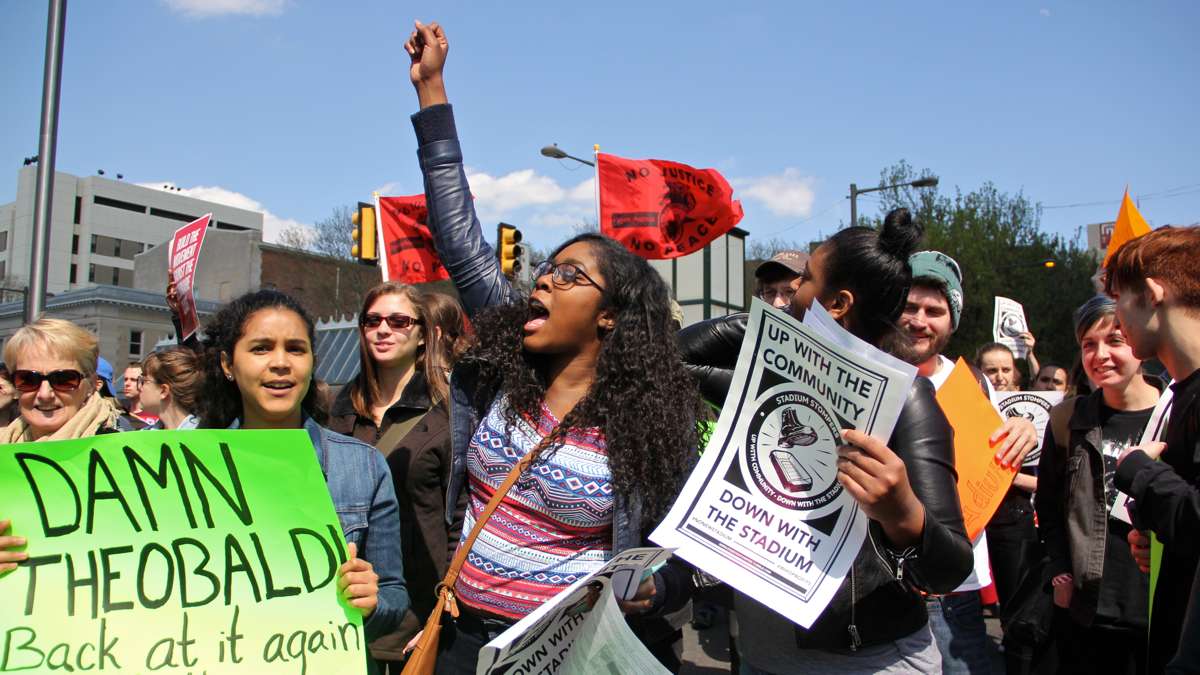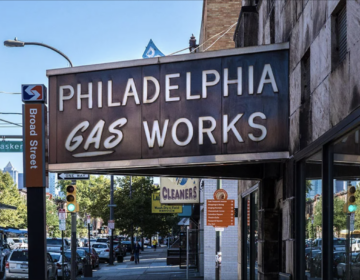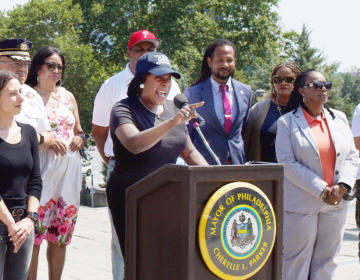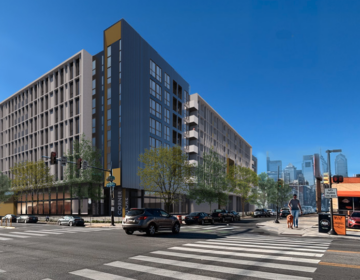The opposition to Temple Stadium is getting organized

Neighbors and school faculty continue to question Temple University’s transparency and community engagement in the development of the highly controversial football stadium, the Philadelphia Tribune’s John N. Mitchell reports. “There is now an insensitivity to the residents and the community that previously did not exist,” says Tenth Memorial Baptist Church’s Rev. William B. Moore. The Temple officials were unable to reach an equitable situation with Lincoln Financial Field, Moore explains, “so now they are just moving ahead with no regard for the people who in many cases are trapped by circumstances of age and economics.” Mitchell reports that the Temple Faculty Senate, which represents 2,200 full-time employees, passed a resolution by a 24-1 vote (with three abstaining) last month “urging the Board of Trustees to reverse its decision to apply to the Planning Commission to approve the stadium.” Temple English professor and co-producer of the resolution Steve Newman expressed “deep misgivings” about the stadium and said” professors have yet to see a feasibility study for the project. They doubt university officials have been honest with them regarding which community members they are consulting with.” The coalition of opponents held their community meeting Thursday, and in response to mounting public criticism, the university will host its town hall Tuesday. City Council President and local representative Darrel Clarke was not at the meeting to hear shouts of “throw them out” directed at local officials.
The rare parking ticket win-win
The parking ticket amnesty program kicked off with tears of relief and confidence, WHYY News’ Aaron Moselle reports. South Philadelphia resident Yolanda Raines said that she’s owed $5,000 for more than two decades and the debt has stopped her from getting a driver’s license. North Philadelphia resident Timothy Fontaine shares that he has had roughly $10,000 worth of unpaid tickets dating back to the 1980s. The Auditor General’s released in December audit results that found that the Philadelphia Parking Authority had failed to collect more than $580 million in unpaid parking tickets and associated fees since 1990. A portion of the $100 million expected to be recouped through the Amnesty program will go to the cash-strapped school district.
Déjà brûlée on the 200 block of Chestnut
Directly across the street from the remaining precarious bones of 239 Chestnut Street, history presaged itself almost 150 years ago. The “eight-story, 113-foot marvel that quite possibly inspired architects of taller Philadelphia skyscrapers,” also succumbed to flames, writes Tyler Rudd Putman, contributing to a Hidden City. Putnman pays his respects to the once towering Jayne Building, now the site of the new Museum of the American Revolution that also suffered fiery destruction, losing its “impressive tower” in 1872.
Putnum describes the flames that night: “It was so cold that the water used to douse the fire almost immediately formed a stunning waterfall of ice…crowds gathered to gape at the scene. Photographers R. Newell & Co. even published a series of photographs of the icy spectacle.” (A 2015 fire in West Philadelphia also ended in icicles, with creating a flurry of photos across the internet and a wizard before the ice melted and the building was demolished.) The building itself survived for another 75 years until it was demolished in the late 50s, though the city mourned the fall of the tower. The Philadelphia Inquirer lamented in an 1872 eulogy, “the loss of so noble a building is one that the whole city will feel.” How we put the pieces back together after the losses on Chestnut Street this time, Putnam writes, “when even that is impossible, how we remember what once was, is our cultural responsibility.” 6ABC reports that the first restaurant to open following the February fire, Capofitto’s, went back to business Wednesday.
Esri maps incomes in Philly
Your Friday afternoon map: Esri has a new set of interactive maps that show the wealth and poverty concentrations in Philadelphia and how it compares to the rest of the country, Billy Penn’s Danya Henninger reports. Esri’s first Philly map shows “the bleed of Center City’s affluence,” Henninger writes, likening the income disparity to the situation in Manhattan. The second map looks at “where the proportion of “poor” or “rich” households exceeds the national average — makes apparent Philly’s so-called “middle neighborhoods.” The third map illustrates “the likelihood that households in a given area belong to different income brackets,” showing that very few low-income houses in Fairmount, Rittenhouse and Wash West and very few high-income households in North Philly and Mantua.
Announcing Uber Health
Uber keeps unveiling stuff. This week, NPR reports, the rideshare giant announced its latest service, a partnership with healthcare organizations that provides patients with rides without needing an Uber account—or, more critically—without a smartphone. Doctor’s offices can schedule the trips, and the drivers continue to use the app, while patients get an SMS text. The company also plans to introduce a landline option. A hundred organizations, including hospitals, clinics, rehab centers, senior care facilities, home care centers, and physical therapy centers piloted ‘Uber Health.’ Uber says the service will be rolled out gradually.
WHYY is your source for fact-based, in-depth journalism and information. As a nonprofit organization, we rely on financial support from readers like you. Please give today.







